
Work safety has been making the headlines lately. There has been no shortage of incidents which highlight the need for clear protocols and systems to protect people.
The most notable lately has been the Whakaari/White Island tragedy. But also the two lads killed while commuting to wok in southern Hawkes Bay and others have brought to light New Zealand is lagging behind most other comparable countries. In fact, in a recent radio interview economist Shamubeel Eaqub told listeners that New Zealand has twice the workplace fatality rate per capita than Australia.
The timing of the report appears to be to alert both/any potential government parties to the issues before too great a slash and burn approach is taken to staffing. He is a co-author of a report commissioned by the Business Leaders' Health and Safety Forum.
The report also highlights the fact that within New Zealand the agricultural sector stands out above other sectors as where a disproportionate number of both accidents and fatalities are occurring. And as the graph below shows over the broader industry that appears to be the case.
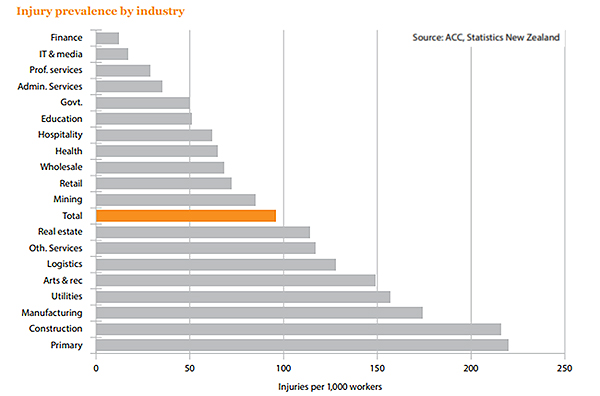
However, when a closer look at the farming sector (agriculture) a different set of assumptions can be taken especially when relating the trends of farming against the national trends.
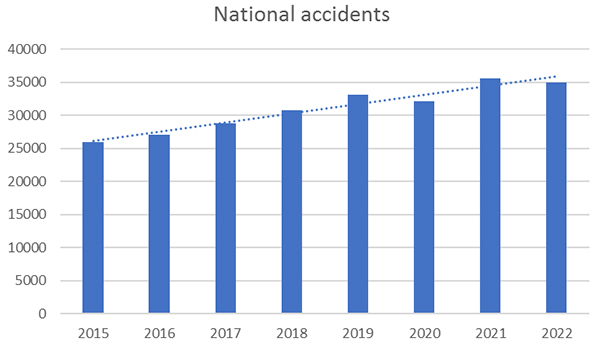
Source: Compiled from WorkSafe NZ data.
Nationally, going by accidents that keep workers away from their job for a week or more, the trend is of increasing incidence. Whereas using the same source and criteria agriculture is declining; not at a great rate admittedly and no doubt improvements need to be made, but declining never the less.
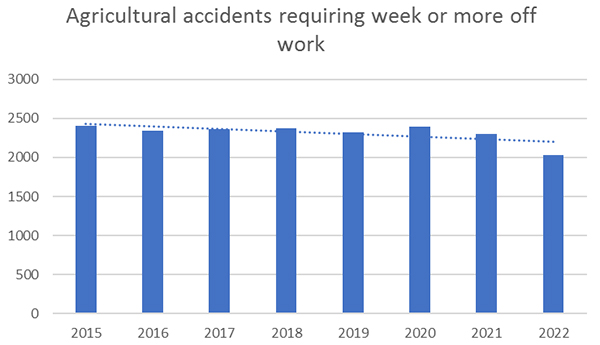
When it comes to the more serious matter of fatalities, New Zealand is not doing great, not quite double that of Australia as Shamubeel Eaqub told listeners but still considerably more.
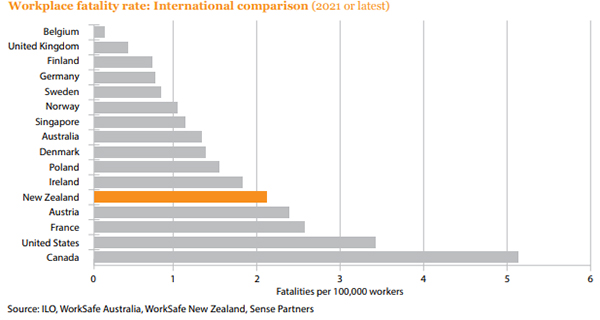
Again, we do seem to hear too often of deaths occurring on farms. With the high use of mechanised equipment of hills plus the handling of large animals, avoiding fatalities as a sector agriculture will always be more difficult than most other sectors.
Nationally over all sectors there has been a slight improvement with a slight downward trend.
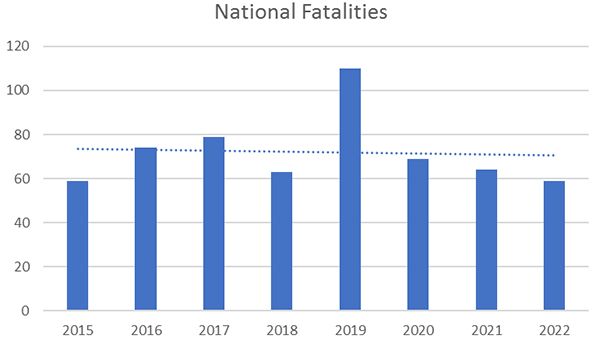
Source: Compiled from WorkSafe NZ data.
Agriculture, while it is still having too many it at least appears to be leading the way with declining numbers considerably faster than at the national level. In part this may be that agriculture is coming from a ‘higher’ base so more ‘low hanging fruit’ to utilise to get some improvement.
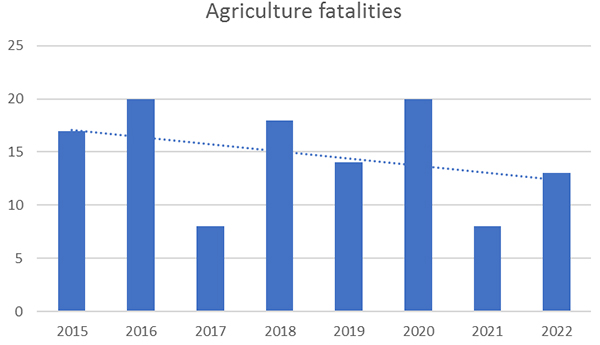
Source: Compiled from WorkSafe NZ data.
Despite the fact that agriculture is improving and at a considerably faster rate than the general workforce, when it comes to a per capita basis agriculture is (still) lagging behind. By my calculations all sectors come in at 1.24% having a week or more off due to injury per year (2022) whereas agriculture comes in at 1.59%. Unfortunately, when it comes to fatalities the gap is even wider with all sectors with agriculture about 4 times higher. I suspect within the rural community the gap could be even wider as the data does not take into account unpaid workers and children, which unfortunately feature too often.
An area of interest within the ‘report’ was a discussion of the impact of economic cycles. The conventional wisdom generally is that in downturns injuries etc increase due to cost cutting and reduced staffing etc. However, the realities seem to be more complex.
In times of growth there are also greater work demands often with new and less experienced staff as ‘firms’ gear up leading to more injuries.
Likewise, in downturns there may be staff laid off and the remainder work harder but it can be that these remaining staff are more experienced and skilled at what they do. So, the message is we can’t assume anything as there are all sort of countering pressures.
One thing that did stand out in the data on agricultural injuries was that August stood out as being the month most commonly seen as when most accidents occurred. This would make sense particularly for dairy, with long dark days but whether that is what is driving the spike is unclear.
Despite New Zealand not comparing well against similar countries the government is not looking great at trying to provide further inputs to improve rates. The number of WorkSafe inspectors has fallen from 8.4 per 100,000 workers in 2013, (the stated WorkSafe NZ target), to 6.3 in 2023. And the table below shows how New Zealand compares against others.

Source: RNZ July 2023
The area of “social protection” which is one of a government’s roles cannot be understated and this extends to safety in the workplace and while safety cannot necessarily lead to unemployment the two do need an active role from government. An oft quoted recent example regards Spain which spent little on social protection, leading to an increase in suicides with unemployment. Sweden, on the other hand, spent about four times more on social support programmes, and suicide rates did not increase.
A footnote to this; the Business Leaders’ Health and Safety Forum is conducting meetings throughout the county over the coming weeks and applications to attend can be done through their site.
3 Comments
Fatalities. Canada wt$.
I know a farmer spent some time in a ward due to a self amputation in August, there but for the grace of god go most of us. 5 others in the ward, 50% farmers. I work hard to not be there myself but even so luck plays a huge part, just so easy and so many opportunities to get it wrong.
Currently having discussion on moving a herd across a road. Not busy. I'm all for fast is good, less time on the road equates to less time in danger. Other half of the partnership is all about setting up doing properly all the gear set out etc. Not sure who's right.
I may detest the paper work and talk nonsense but H&S is huge, the risks in getting something wrong, even small, is life changing. From my experience tiredness is the biggest threat.
Awesome! Most farmers have had over the last years visits from work safe, h and s plans are now part and parcel of auditing requirements from the likes of NZ merino and the Farm Assurance programme, no doubt they are in Fonterra Audits. When is the constant pressure from the government going to end, I’ve pretty much had enough of farming because of it all. Constant audits, all the environmental legislation, bio diversity, and much more, it doesn’t seem to end.
I farm all by myself, it’s bloody tough. There’s been multiple times that haven’t been sure if I was going to make it home, more layers of H and S isn’t going to make it more likely that I come home at night. Allowing me to farm with more freedom and less beauracratic stress is. Most of us are pretty good stewards of the environment, the ironic thing is if I choose to sell, forestry is likely to take over, hardly great for the environment.




We welcome your comments below. If you are not already registered, please register to comment.
Remember we welcome robust, respectful and insightful debate. We don't welcome abusive or defamatory comments and will de-register those repeatedly making such comments. Our current comment policy is here.